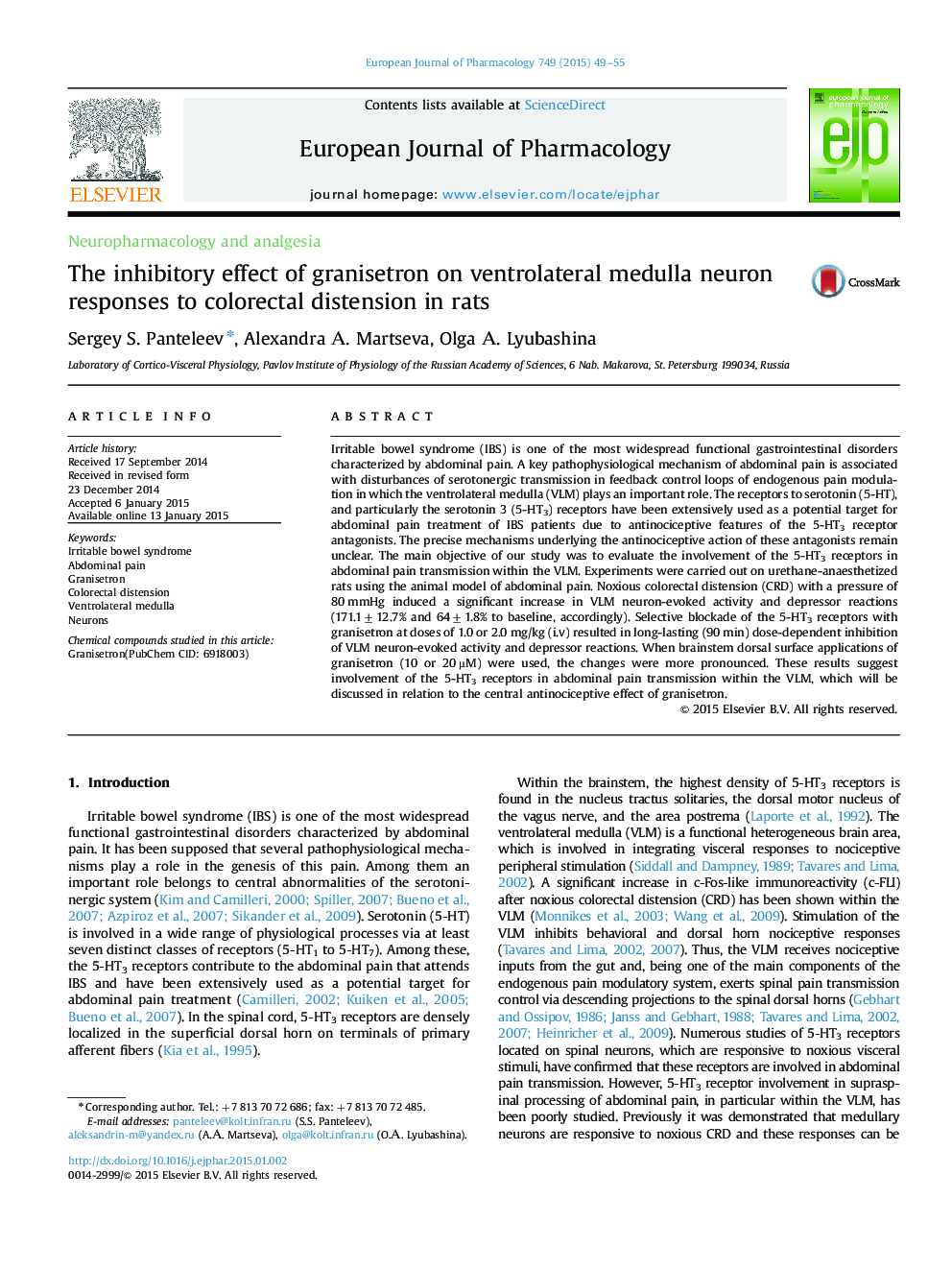| Article ID | Journal | Published Year | Pages | File Type |
|---|---|---|---|---|
| 5827555 | European Journal of Pharmacology | 2015 | 7 Pages |
Abstract
Irritable bowel syndrome (IBS) is one of the most widespread functional gastrointestinal disorders characterized by abdominal pain. A key pathophysiological mechanism of abdominal pain is associated with disturbances of serotonergic transmission in feedback control loops of endogenous pain modulation in which the ventrolateral medulla (VLM) plays an important role. The receptors to serotonin (5-HT), and particularly the serotonin 3 (5-HT3) receptors have been extensively used as a potential target for abdominal pain treatment of IBS patients due to antinociceptive features of the 5-HT3 receptor antagonists. The precise mechanisms underlying the antinociceptive action of these antagonists remain unclear. The main objective of our study was to evaluate the involvement of the 5-HT3 receptors in abdominal pain transmission within the VLM. Experiments were carried out on urethane-anaesthetized rats using the animal model of abdominal pain. Noxious colorectal distension (CRD) with a pressure of 80 mmHg induced a significant increase in VLM neuron-evoked activity and depressor reactions (171.1±12.7% and 64±1.8% to baseline, accordingly). Selective blockade of the 5-HT3 receptors with granisetron at doses of 1.0 or 2.0 mg/kg (i.v) resulted in long-lasting (90 min) dose-dependent inhibition of VLM neuron-evoked activity and depressor reactions. When brainstem dorsal surface applications of granisetron (10 or 20 µM) were used, the changes were more pronounced. These results suggest involvement of the 5-HT3 receptors in abdominal pain transmission within the VLM, which will be discussed in relation to the central antinociceptive effect of granisetron.
Keywords
Related Topics
Life Sciences
Neuroscience
Cellular and Molecular Neuroscience
Authors
Sergey S. Panteleev, Alexandra Ð. Martseva, Olga Ð. Lyubashina,
